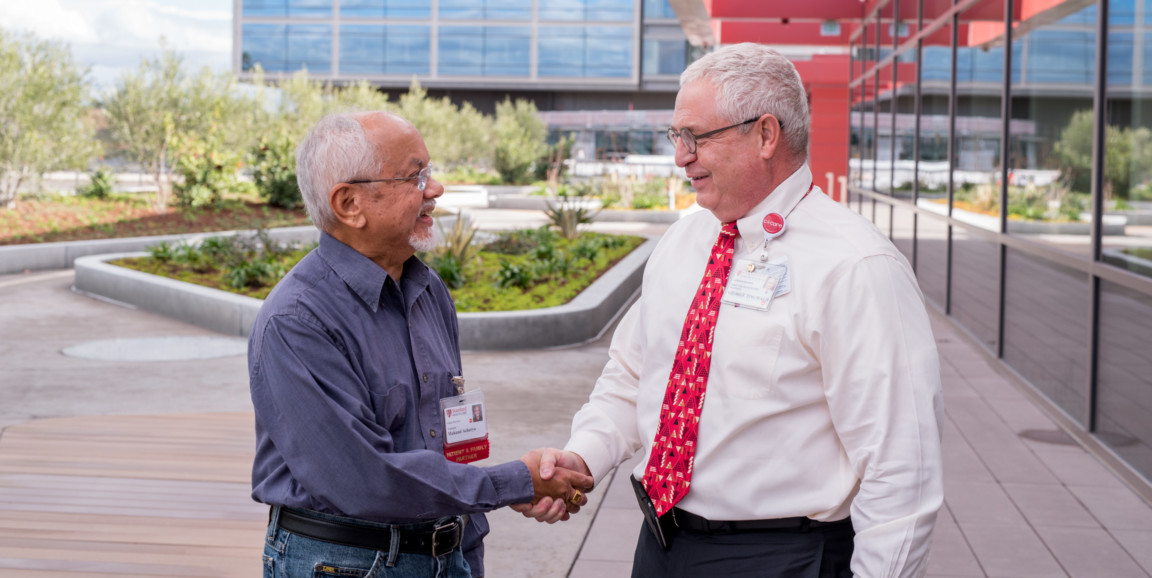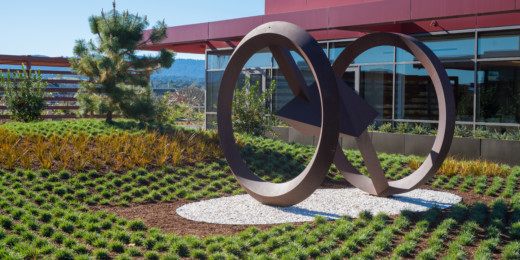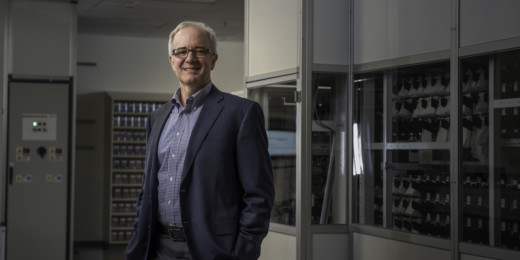When you think of a perfect marriage of professions for someone to take on the task of getting a new hospital built, George Tingwald, MD, fits the bill. Tingwald, director of medical planning at Stanford Health Care, is both a surgeon and an architect.
His path in medicine, he told me in this 1:2:1 podcast, actually began when he was 6 years old. His father, a surgeon, had the child care duty on weekends and took his young son to the hospital to tag along as he saw patients.
At the same time, the fine arts always held great interest for Tingwald and at the University of Chicago, he double-majored in biology and art history with a minor in fine arts.
"I went to the Cleveland Clinic after medical school to do my residency, Malcom Cutting, who's sort of my mentor, was the campus architect. He knew I had this interest, and he believed... that you need to involve doctors and nurses in the planning process for buildings, and asked me if I would be one of those doctors who would help him program a large facility."
There the makings of an architect were stirred and Tingwald later entered architecture school at Columbia University while still practicing medicine. "I was," he told me, "the oldest person in my class."
We discussed some of the many exciting things found in the new Stanford Hospital. One aspect that has changed in the hospital settting, Tingwald told me, is the single patient room. No longer viewed as a luxury or perk, there is much data that confirms healing is more rapid in single rooms.
There's a movement that's been going on... led by a group called the Institute for Family-Centered Care. Basically, it's tried to bring the family into the healing process in the hospital. That requires family members to be with the patient during their entire stay, 24/7.
There's enormous data that supports that it shortens the patient's stay. It decreases the amount of complications and errors that take place.
Single rooms also curb infections, he said. In addition, there's finally the recognition that the single room is also cost-effective.
"I think many people felt it's got to be more expensive to build a hospital with all private rooms. It actually costs less to operate a hospital with all private rooms because you can run at extremely high utilization. You can put any patient in any room."
As you walk through the new Stanford Hospital, one of the most striking aspects is light. Light envelopes you, surrounds you, sunlight streams through all of the doors, windows and open space. Is that a coincidence, I asked.
There is no place in the new hospital where you cannot see the daylight and the light, whether that's from above in the skylights in the atrium, to windows at the ends of every corridor, to all of the access to outdoor space on the third wellness floor.
That comes from research started by social psychologist Roger Ulrich, PhD. This very important research showed that light and view is hugely impactful in the healing process of patients.
Now after seeing the job all the way through from vision and conception to the doors actually having opened and accepting patients, Tingwald said it's been "a thrilling experience to see things from the beginning to the opening and completion."
Photo of George Tingwald, right, greeting Mukund Archarya, a patient and family volunteer, courtesy of Stanford Health Care






